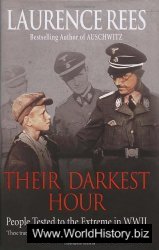The collapse of prices on the American stock market in late October 1929 has come to symbolize the end of the prosperity of the 1920s and the beginning of the long decade of the Great Depression. But while the stock market crash was a shocking and significant event, the economy was already in trouble and the market crash itself did not cause the depression.
After declining early in the autumn of 1929, stock prices fell sharply on October 23. The next day, “Black Thursday,” a record high 12.9 million shares were traded, as panicked selling drove stock prices down still further before major bankers succeeded in rallying prices and confidence. Then on “Black Tuesday,” October 29, the bottom dropped out of the stock market, with more than 16 million shares changing hands in a stampede of liquidation. By November, the value of industrial stocks had plummeted to just half of their September high—and prices continued generally down for the next three years. By 1932, the total price of all stocks on the New York Stock Exchange had fallen by more than 80 percent. For the stocks of some of the leading industrial and commercial companies, the collapse of prices was devastating: General Electric and RCA fell by 98 percent from 1929 to 1932, for example; Sears, Roebuck by 95 percent; and U. S. Steel by 92 percent. It took the stock market until 1954 to regain 1929 levels.
The basic reason for the stock market crash is that by 1929 stock prices were so high, out of a sound relation to the real value of the stocks, that a decline was virtually inevitable. Throughout much of the 1920s, there had been a steady rise in stock prices, largely reflecting solid investments in companies doing well in an expanding economy. But in 1928, get-rich-quick speculation increasingly displaced careful investment, and trading and prices on the stock market exploded. The volume of sales on the New York Stock Exchange nearly doubled from 1927 to 1929, and the prices of the major industrial stocks doubled just between May 1928 and September 1929. Though by some analyses prices of most stocks were not hugely out of line with earnings and potential, many were seriously overpriced—and the general high price level rested on confidence that both individual firms and the “new economy,” would continue to grow and prosper.
A number of factors had caused the spectacular bull market of 1928-29. The expansion of the American economy after the 1921-22 recession produced a confident expectation of continued prosperity. Worried about attracting too much gold to the United States and thus weakening the international financial system, the Federal Reserve Board lowered interest rates in 1927, facilitating heavy borrowing by investors and speculators. Stockbrokers’ call loans were easy to get—often requiring a margin payment from their borrowers of only a small fraction of a stock’s current price, with the stock itself serving as collateral for the loan. Major corporations by the late 1920s increasingly were putting their large cash reserves into the stock market rather than into plant expansion, while commercial banks put more and more money into the stock market instead of into commercial loans. The unregulated stock market enabled stock promoters to put out inflated (often simply dishonest) information and prospectuses. And as prices shot up in 1928 and 1929, a speculative buying momentum drove prices up still further, despite tighter money policies by the Federal Reserve. In retrospect, it is clear that market prices were dangerously high, and that a downward correction or readjustment was almost sure to come.
The readjustment, which became the crash, then occurred in the late summer and fall of 1929. Evidence that the economy was slowing led some stockholders to sell their shares in order to take their profits before prices fell. Instability on the London Stock Exchange unsettled the American market. As some prices began to fall, investors and speculators alike became concerned about the future, and an increase in orders to sell stocks caused sharp price declines. Nervous brokers began to call loans on declining stocks, which caused still more liquidation. What had been a speculative dynamic that sent prices up became a panicked dynamic driving them down in a ferocious bear market. The stock market buckled in mid-October, broke on “Black Thursday,” and then collapsed on “Black Tuesday.” The doubling of industrial stock prices that had occurred in the previous 16 months was wiped out in just two months. The market would continue to spiral down to its nadir some three years later.
The consequences of the Great Crash were serious, though often exaggerated or misunderstood. At most, some 2 or 3 percent of the population owned stock, and few were so heavily invested that the crash produced bankruptcy or impoverishment. Tales of suicidal leaps from tall buildings are essentially myth. And the Great Crash did not by itself cause or begin the Great Depression; indeed, some scholars assign it a relatively small role in the collapse of the economy. But the crash was a stunning event with large impact and evidently played some role in the development of the Great Depression. It dashed much of the economic confidence of the 1920s, illuminated weak spots in the economy, weakened the vulnerable banking system, inhibited consumer spending and private investment that might have helped buoy the economy, and helped to dry up American loans overseas that had supported the international economy. The stock market crash and investigations launched by Congress also helped to bring about New Deal reforms of the stock market and the creation of the Securities and Exchange Commission as the regulatory agency to enforce new standards.
Further reading: John Kenneth Galbraith, The Great Crash (Boston: Houghton Mifflin, 1955); Maury Klein, Rainbow’s End: The Crash of1929 (New York: Oxford University Press, 2001).




 World History
World History









